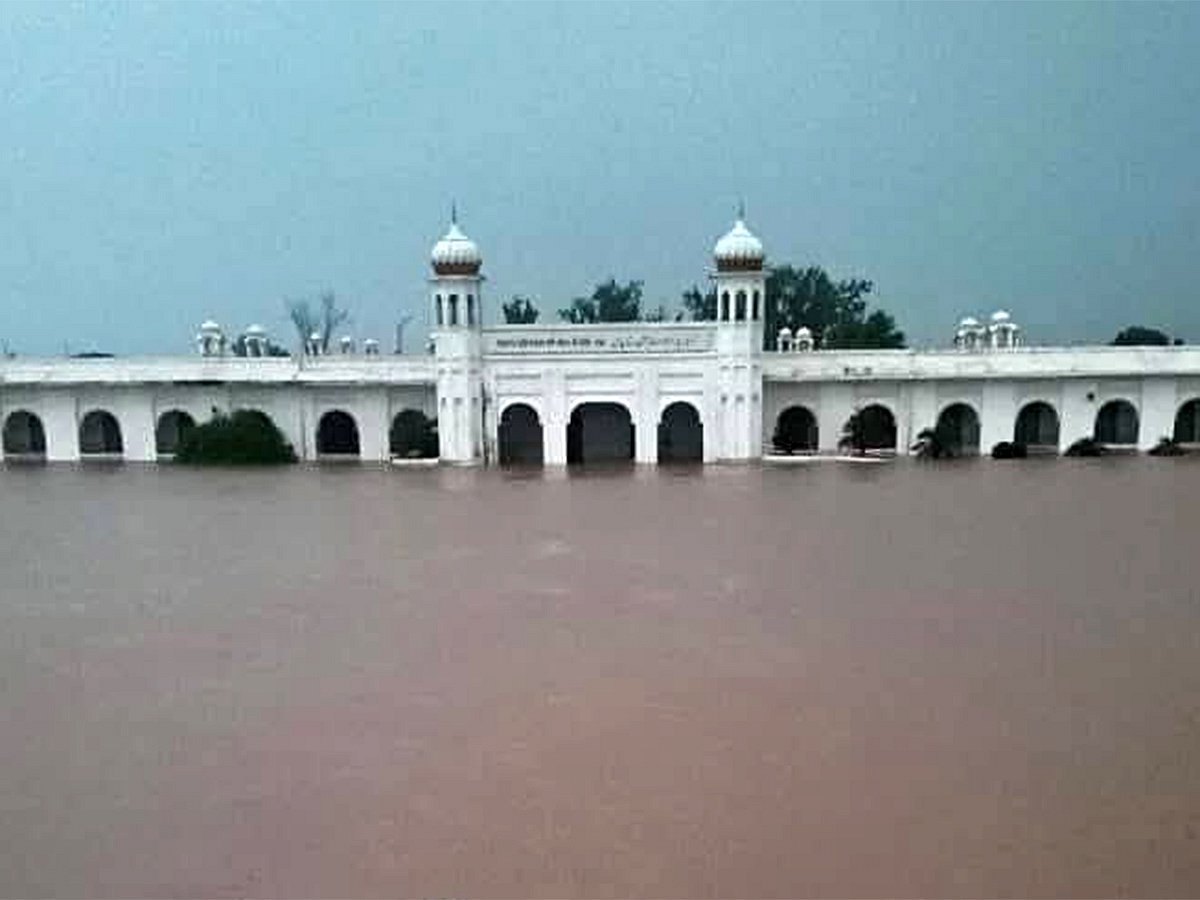Dubai: The historic Kartarpur Sahib Gurdwara, one of Sikhism’s holiest shrines and believed to be the final resting place of Guru Nanak Dev, has been partially submerged by floodwaters from the Ravi River, as Punjab reels under its worst flooding in more than a decade.
Visuals from Narowal district of Punjab show the Gurdwara Darbar Sahib complex inundated, with three to four feet of water standing across its white-marble premises. Floodwaters have even seeped into the sanctum, though officials confirmed that the sacred Saroop of Guru Granth Sahib-ji and the sevadars (volunteers) have been safely moved to the first floor. Rescue teams are on standby to evacuate them if the situation deteriorates.
The flooding has forced the closure of the Kartarpur Corridor, which links the shrine with India’s Gurdaspur district and allows visa-free access for Sikh pilgrims. Authorities in Gurdaspur said parts of the corridor are under water, and operations have been suspended.
Floods devastate Punjab
Punjab’s flood crisis has deepened due to a deadly mix of record monsoon rains and water releases from Indian dams. At Jassar, the Ravi is carrying over 200,000 cusecs of water, with peak flows expected to hit Shahdara in Lahore overnight. Authorities have issued a red alert, warning of severe inundation across low-lying areas, with families displaced, and livestock and crops already destroyed.
The sacred legacy of Kartarpur
Located on the banks of the Ravi, Gurdwara Darbar Sahib Kartarpur marks the site where Guru Nanak, the founder of Sikhism, spent the last 18 years of his life until his passing in 1539. The gurdwara is revered as the place where he lived as a householder, preached, and farmed the land. Over centuries, the shifting course of the Ravi placed parts of Guru Nanak’s original settlement across today’s India-Pakistan border.
Earlier flooding
The shrine itself has endured floods before, with its original structure destroyed and later rebuilt by Maharaja Bhupinder Singh of Patiala. After the 1947 partition, it remained closed to Indian pilgrims for decades until its restoration and reopening in 1999. The landmark Kartarpar Corridor, inaugurated in 2019, symbolised a rare moment of goodwill between India and Pakistan, enabling thousands of Sikh pilgrims to visit each year.
The complex also houses a 500-year-old well believed to date back to Guru Nanak’s lifetime, and preserves relics including a chola (robe) gifted to him during his visit to Mecca. Sikh jathas (pilgrims) continue to visit the shrine annually for major religious occasions such as Baisakhi, the martyrdom day of Guru Arjan Dev, and Guru Nanak’s birth anniversary.
Symbolism amid crisis
For millions of Sikhs worldwide, Kartarpur Sahib is not just a place of worship but a powerful symbol of faith and peace across borders. Its partial submergence underscores both the scale of the current flood disaster and the vulnerability of South Asia’s cultural and religious heritage sites in an age of climate-driven crises.
Sign up for the Daily Briefing
Get the latest news and updates straight to your inbox
Network Links
GN StoreDownload our app
© Al Nisr Publishing LLC 2025. All rights reserved.

